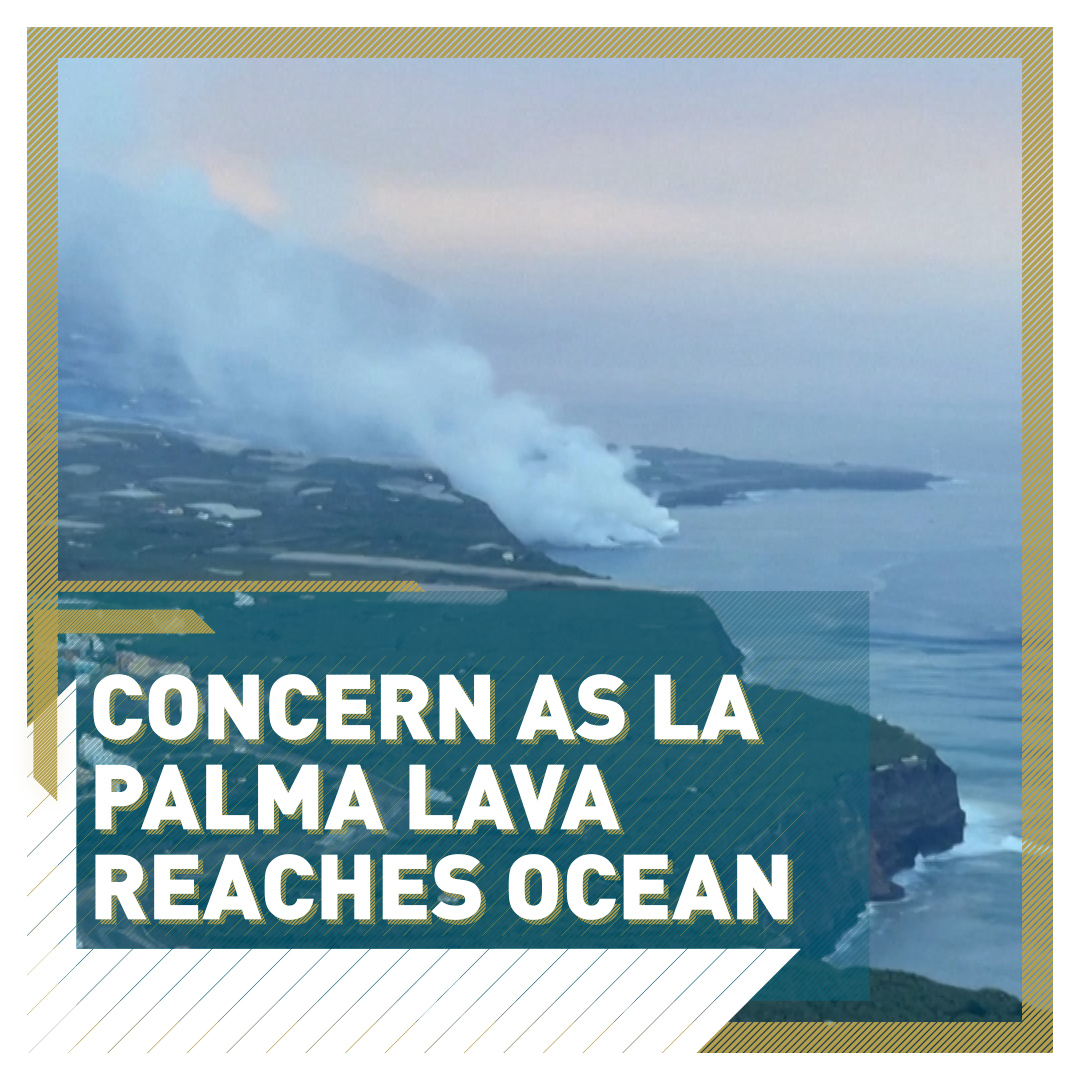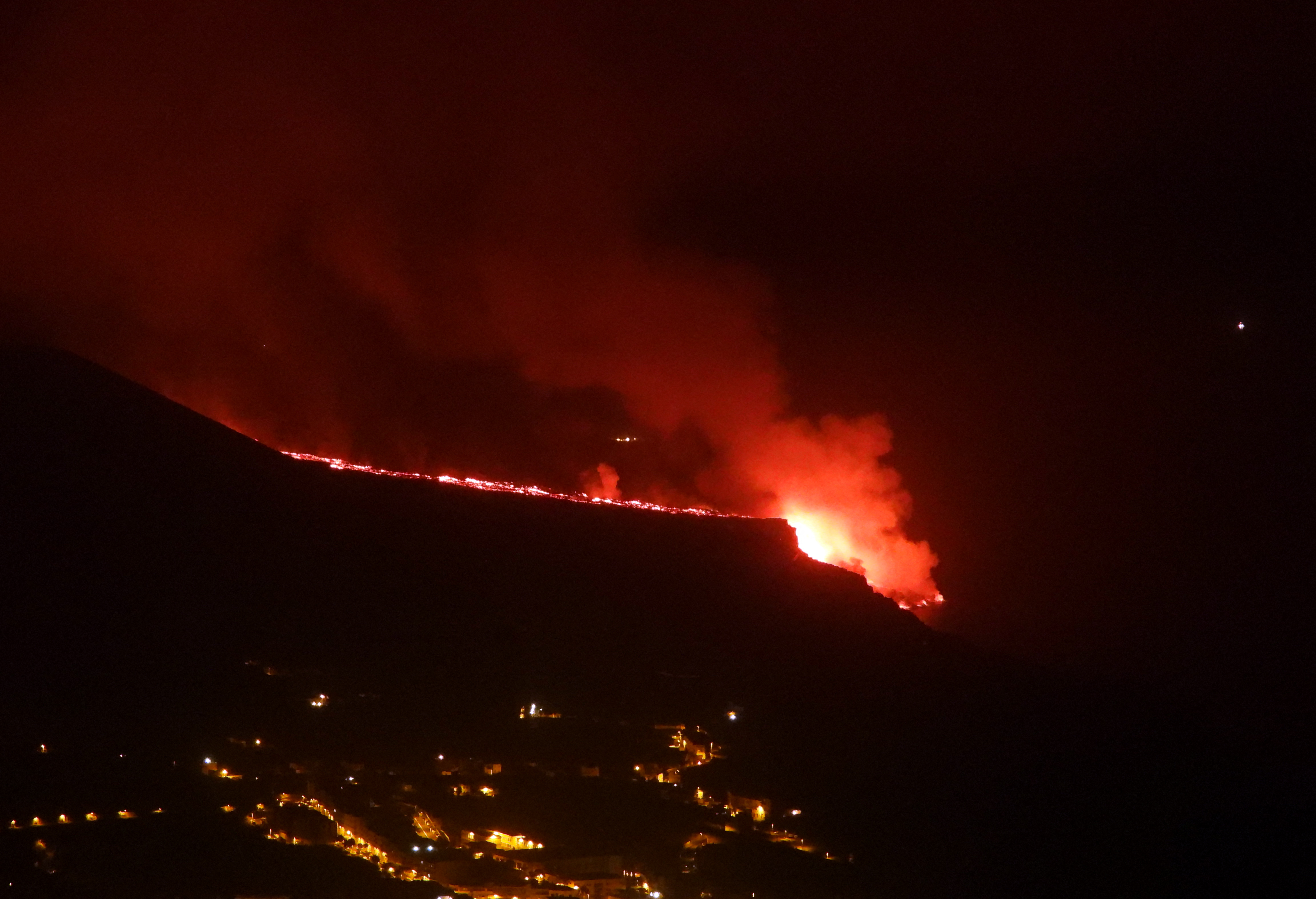00:59

Red hot lava, which has been spewing from the Cumbre Vieja volcano on the Spanish Canary Island La Palma, reached the Atlantic Ocean on Tuesday, nine days after it first erupted.
Footage from Spain's Guardia Civil Police captured big clouds of white steam blanketing the sky in the Playa Nueva area as the 1,000 degrees Celsius molten lava made contact with a cliff and met the ocean.
Officials have warned that the lava flowing into the sea could trigger explosions and clouds of toxic gases. The Canary Islands' emergency service has also urged those within a 2-mile radius to stay indoors and block up any gaps in properties to prevent toxic gases from entering their homes.
There are concerns that the thermal shock from the lava hitting the water could release toxic hydrochloric acid vapor into the atmosphere, which irritates the eyes and skin. Local officials have also warned that there could be explosions.

The lava flow produced by the Cumbre Vieja volcano reached the Atlantic Ocean in Los Girres beach in Tazacorte on the Canary Island of La Palma. /Sunsets Sweden/AFP
The lava flow produced by the Cumbre Vieja volcano reached the Atlantic Ocean in Los Girres beach in Tazacorte on the Canary Island of La Palma. /Sunsets Sweden/AFP
Spain classified La Palma as a disaster zone on Tuesday. The government announced an initial financial aid package of $12.3 million, around half of which will be going towards buying houses and the rest towards acquiring furniture and essential household goods, according to government spokesperson Isabel Rodriguez.
At least 600 houses and banana plantations have been destroyed and 6,000 people have been evacuated on the island, which neighbors Tenerife in the Canary Islands archipelago off the North African coast and is home to 85,000 people. No injuries have been reported so far.
Video editor: Pedro Duarte
Source(s): Reuters

